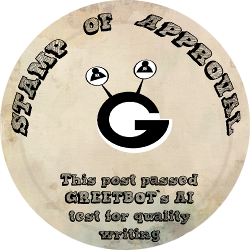 |  |
| LIQUIDITY | is an intermediary used in trade to avoid the inconveniences of a pure barter system. fiat currencies are the generally accepted mediums of exchange. their most important and essential function is to provide a measure of value. |
| MINER | the successful act of hashing a transaction and adding it to the blockchain. |
| CROWDSOURCING | the pooling of resources such as information or money contributed by the general population, to a goal. this is usually done online via websites where people can donate. |
| CRYPTOGRAPHY | a type of network where processing power and data are spread over the nodes rather than having a centralised data centre. |
| DIGITAL ASSET | a cryptocurrency needs some kind of mechanism to prevent one ruling party from abusing it. a miner can build a block and add it to the blockchain. as an incentive, he has the right to add a so-called coinbase transaction that gives him a specific number of bitcoins. |
| CONFIRMATION | in cryptography a public key is a cryptographic key that can be utilized by any party to encrypt a message. another party can then receive the message and using a key that is only known to that individual or group, decode the message. |
| PUBLIC/PRIVATE KEY | is the practice and study of techniques for secure communication in the presence of third parties called adversaries. cryptocurrencies are built on cryptography. they are not secured by people or by trust, but by math. it is more probable that an asteroid falls on your house than that a bitcoin address is compromised. |
| DISTRIBUTED NETWORK | anything that exists in a binary format and comes with the right to use. data that do not possess that right are not considered assets. digital assets include but are not exclusive to: digital documents, audible content, motion picture, and other relevant digital data that are currently in circulation or are, or will be stored on digital appliances. |
| DECENTRALIZED | the ability to buy and sell an asset easily, with pricing that stays roughly similar between trades. a suitably large community of buyers and sellers is important for liquidity. the result of an illiquid market is price volatility, and the inability to easily determine the value of an asset. |
| MEDIUM OF EXCHANGE | a common term in cryptocurrency which means that the currency isn’t issued or regulated by a centralized authority, such as a bank or government. |
 |  |
| LIQUIDITY | the ability to buy and sell an asset easily, with pricing that stays roughly similar between trades. a suitably large community of buyers and sellers is important for liquidity. the result of an illiquid market is price volatility, and the inability to easily determine the value of an asset. |
| MINER | a cryptocurrency needs some kind of mechanism to prevent one ruling party from abusing it. a miner can build a block and add it to the blockchain. as an incentive, he has the right to add a so-called coinbase transaction that gives him a specific number of bitcoins. |
| CROWDSOURCING | the pooling of resources such as information or money contributed by the general population, to a goal. this is usually done online via websites where people can donate. |
| CRYPTOGRAPHY | is the practice and study of techniques for secure communication in the presence of third parties called adversaries. cryptocurrencies are built on cryptography. they are not secured by people or by trust, but by math. it is more probable that an asteroid falls on your house than that a bitcoin address is compromised. |
| DIGITAL ASSET | anything that exists in a binary format and comes with the right to use. data that do not possess that right are not considered assets. digital assets include but are not exclusive to: digital documents, audible content, motion picture, and other relevant digital data that are currently in circulation or are, or will be stored on digital appliances. |
| CONFIRMATION | the successful act of hashing a transaction and adding it to the blockchain. |
| PUBLIC/PRIVATE KEY | in cryptography a public key is a cryptographic key that can be utilized by any party to encrypt a message. another party can then receive the message and using a key that is only known to that individual or group, decode the message. |
| DISTRIBUTED NETWORK | a type of network where processing power and data are spread over the nodes rather than having a centralised data centre. |
| DECENTRALIZED | a common term in cryptocurrency which means that the currency isn’t issued or regulated by a centralized authority, such as a bank or government. |
| MEDIUM OF EXCHANGE | is an intermediary used in trade to avoid the inconveniences of a pure barter system. fiat currencies are the generally accepted mediums of exchange. their most important and essential function is to provide a measure of value. |







Resteemed by @resteembot! Good Luck!
The resteem was paid by @greetbot
Curious?
The @resteembot's introduction post
Get more from @resteembot with the #resteembotsentme initiative
Check out the great posts I already resteemed.
Resteemed by @resteembot! Good Luck!
The resteem was paid by @greetbot
Curious?
The @resteembot's introduction post
Get more from @resteembot with the #resteembotsentme initiative
Check out the great posts I already resteemed.
You were lucky! Your post was selected for an upvote!

Read about that initiative
Hi. I am @greetbot - a bot that uses AI to look for newbies who write good content!

Your post was approved by me. As reward it will be resteemed by a resteeming service.